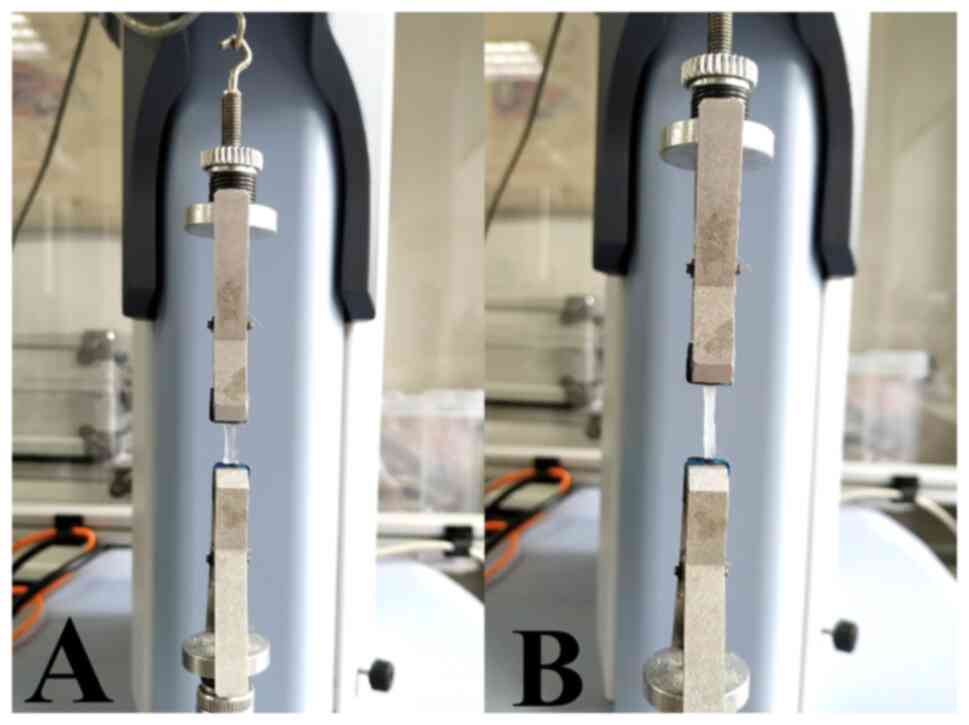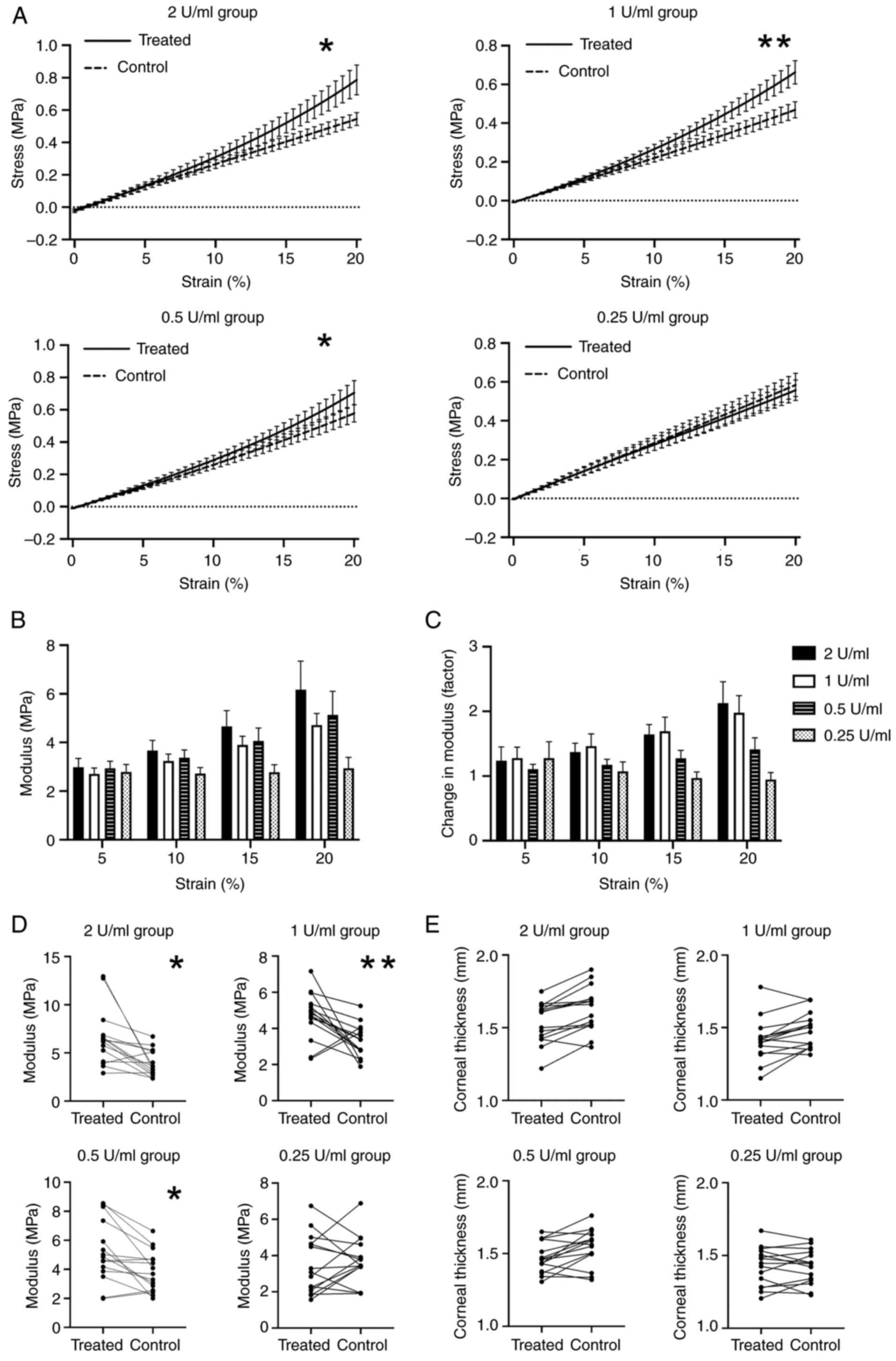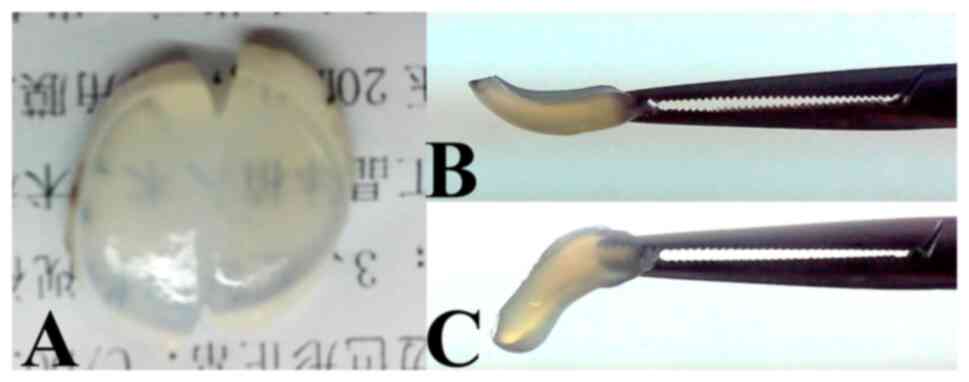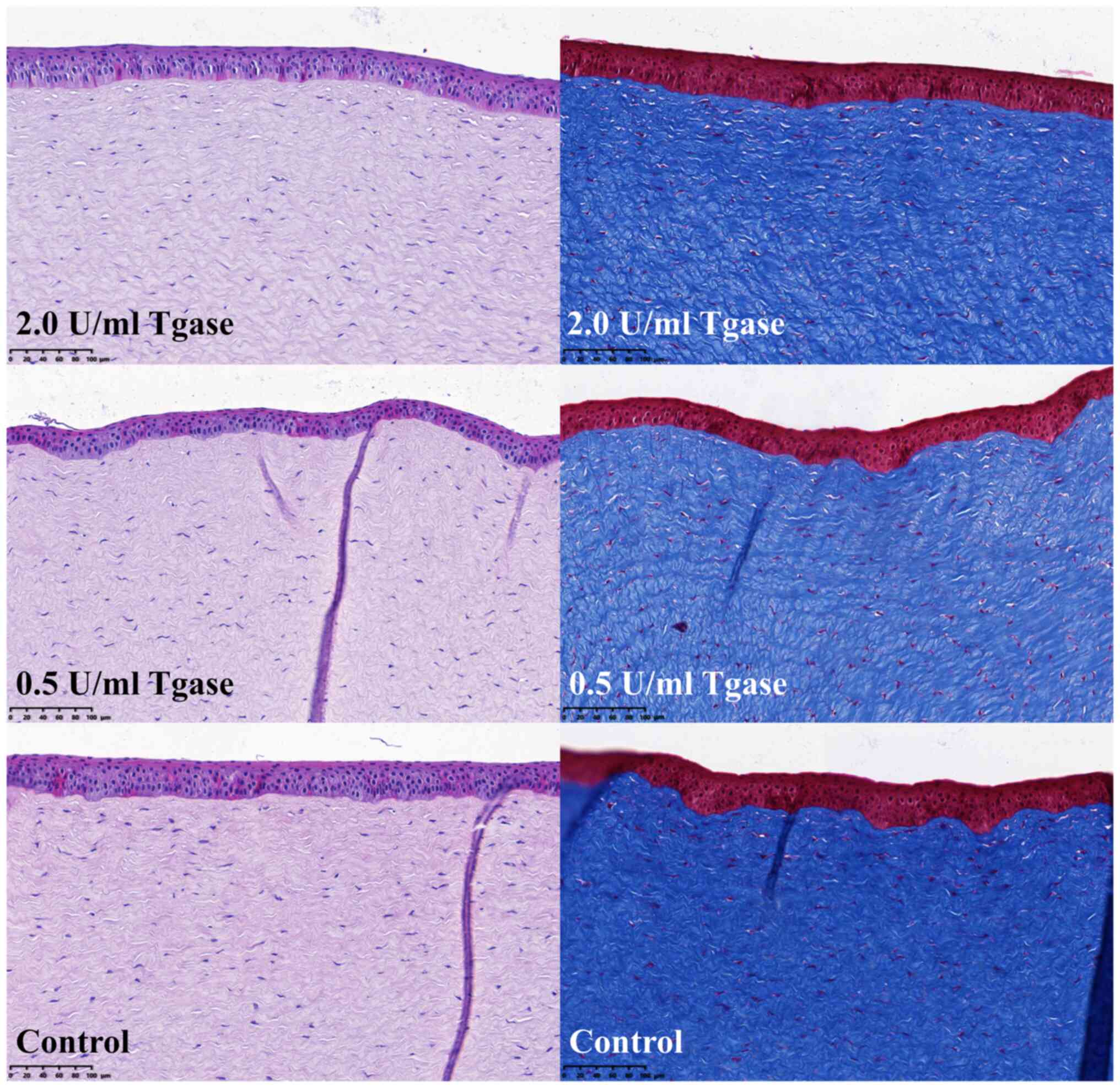|
1
|
Ziaei M, Barsam A, Shamie N, Vroman D, Kim
T, Donnenfeld ED, Holland EJ, Kanellopoulos J, Mah FS, Randleman
JB, et al: Reshaping procedures for the surgical management of
corneal ectasia. J Cataract Refract Surg. 41:842–872.
2015.PubMed/NCBI View Article : Google Scholar
|
|
2
|
Spoerl E, Huhle M and Seiler T: Induction
of cross-links in corneal tissue. Exp Eye Res. 66:97–103.
1998.PubMed/NCBI View Article : Google Scholar
|
|
3
|
Gkika M, Labiris G and Kozobolis V:
Corneal collagen cross-linking using riboflavin and ultraviolet-A
irradiation: A review of clinical and experimental studies. Int
Ophthalmol. 31:309–319. 2001.PubMed/NCBI View Article : Google Scholar
|
|
4
|
Raiskup-Wolf F, Hoyer A, Spoerl E and
Pillunat LE: Collagen crosslinking with riboflavin and
ultraviolet-A light in keratoconus: Long-term results. J Cataract
Refract Surg. 34:796–801. 2008.PubMed/NCBI View Article : Google Scholar
|
|
5
|
Wollensak G, Spoerl E and Seiler T:
Riboflavin/ultraviolet-a-induced collagen crosslinking for the
treatment of keratoconus. Am J Ophthalmol. 135:620–627.
2003.PubMed/NCBI View Article : Google Scholar
|
|
6
|
Noor IH, Seiler TG, Noor K and Seiler T:
Continued long-term flattening after corneal crosslinking for
keratoconus. J Refract Surg. 34:567–570. 2018.PubMed/NCBI View Article : Google Scholar
|
|
7
|
Wollensak G, Spoerl E, Reber F and Seiler
T: Keratocyte cytotoxicity of riboflavin/UVA-treatment in vitro.
Eye (Lond). 18:718–722. 2004.PubMed/NCBI View Article : Google Scholar
|
|
8
|
Kymionis GD, Portaliou DM, Diakonis VF,
Kounis GA, Panagopoulou SI and Grentzelos MA: Corneal collagen
crosslinking with riboflavin and ultraviolet-A irradiation in
patients with thin corneas. Am J Ophthalmol. 153:24–28.
2012.PubMed/NCBI View Article : Google Scholar
|
|
9
|
Greenstein SA, Fry KL, Bhatt J and Hersh
PS: Natural history of corneal haze after collagen crosslinking for
keratoconus and corneal ectasia: Scheimpflug and biomicroscopic
analysis. J Cataract Refract Surg. 36:2105–2114. 2010.PubMed/NCBI View Article : Google Scholar
|
|
10
|
Mastropasqua L, Nubile M, Lanzini M,
Calienno R, Mastropasqua R, Agnifili L and Toto L: Morphological
modification of the cornea after standard and transepithelial
corneal cross-linking as imaged by anterior segment optical
coherence tomography and laser scanning in vivo confocal
microscopy. Cornea. 32:855–861. 2013.PubMed/NCBI View Article : Google Scholar
|
|
11
|
Kopsachilis N, Tsaousis KT, Tsinopoulos
IT, Kruse FE and Welge-Luessen U: A novel mechanism of UV-A and
riboflavin-mediated corneal cross-linking through induction of
tissue transglutaminases. Cornea. 32:1034–1039. 2013.PubMed/NCBI View Article : Google Scholar
|
|
12
|
Dakappa PH and Mahabala C: Analysis of
long-term temperature variations in the human body. Crit Rev Biomed
Eng. 43:385–399. 2015.PubMed/NCBI View Article : Google Scholar
|
|
13
|
Seiler TG, Shao P, Frueh BE, Yun SH and
Seiler T: The influence of hydration on different mechanical moduli
of the cornea. Graefes Arch Clin Exp Ophthalmol. 256:1653–1660.
2018.PubMed/NCBI View Article : Google Scholar
|
|
14
|
Mazzotta C and Caragiuli S: Intraoperative
corneal thickness measurement by optical coherence tomography in
keratoconic patients undergoing corneal collagen cross-linking. Am
J Ophthalmol. 157:1156–1162. 2014.PubMed/NCBI View Article : Google Scholar
|
|
15
|
Greenstein SA, Shah VP, Fry KL and Hersh
PS: Corneal thickness changes after corneal collagen crosslinking
for keratoconus and corneal ectasia: One-year results. J Cataract
Refract Surg. 37:691–700. 2011.PubMed/NCBI View Article : Google Scholar
|
|
16
|
Moghadam RS, Akbari M, Alizadeh Y,
Medghalchi A and Dalvandi R: The outcome of corneal collagen
cross-linking in patients with advanced progressive keratoconus: A
2-year follow-up study. Middle East Afr J Ophthalmol. 26:11–16.
2019.PubMed/NCBI View Article : Google Scholar
|
|
17
|
Hoffman EA, Frey BL, Smith LM and Auble
DT: Formaldehyde crosslinking: A tool for the study of chromatin
complexes. J Biol Chem. 290:26404–26411. 2015.PubMed/NCBI View Article : Google Scholar
|
|
18
|
Cai D, Ben T and De Luca LM: Retinoids
induce tissue transglutaminase in NIH-3T3 cells. Biochem Biophys
Res Commun. 175:1119–1124. 1991.PubMed/NCBI View Article : Google Scholar
|
|
19
|
Kieliszek M and Misiewicz A: Microbial
transglutaminase and its application in the food industry. A
review. Folia Microbiol (Praha). 59:241–250. 2014.PubMed/NCBI View Article : Google Scholar
|
|
20
|
Zhu Y and Tramper J: Novel applications
for microbial transglutaminase beyond food processing. Trends
Biotechnol. 26:559–565. 2008.PubMed/NCBI View Article : Google Scholar
|
|
21
|
Vasić K, Knez Ž and Leitgeb M:
Transglutaminase in foods and biotechnology. Int J Mol Sci.
24(12402)2023.PubMed/NCBI View Article : Google Scholar
|
|
22
|
Meek KM: Corneal collagen-its role in
maintaining corneal shape and transparency. Biophys Rev. 1:83–93.
2009.PubMed/NCBI View Article : Google Scholar
|
|
23
|
Bernard BK, Tsubuku S and Shioya S: Acute
toxicity and genotoxicity studies of a microbial transglutaminase.
Int J Toxicol. 17:703–721. 1998.
|
|
24
|
Zhang ZY and Zhang XR: Corneal collagen
cross-linking with riboflavin and ultraviolet-A irradiation in
patients with thin corneas. Am J Ophthalmol. 153:1002–1003.
2012.PubMed/NCBI View Article : Google Scholar
|
|
25
|
Wu Y, Song W, Tang Y, Elsheikh A, Shao Y
and Yan X: Efficacy and safety of transglutaminase-induced corneal
stiffening in rabbits. Transl Vis Sci Technol. 8(27)2019.PubMed/NCBI View Article : Google Scholar
|


















